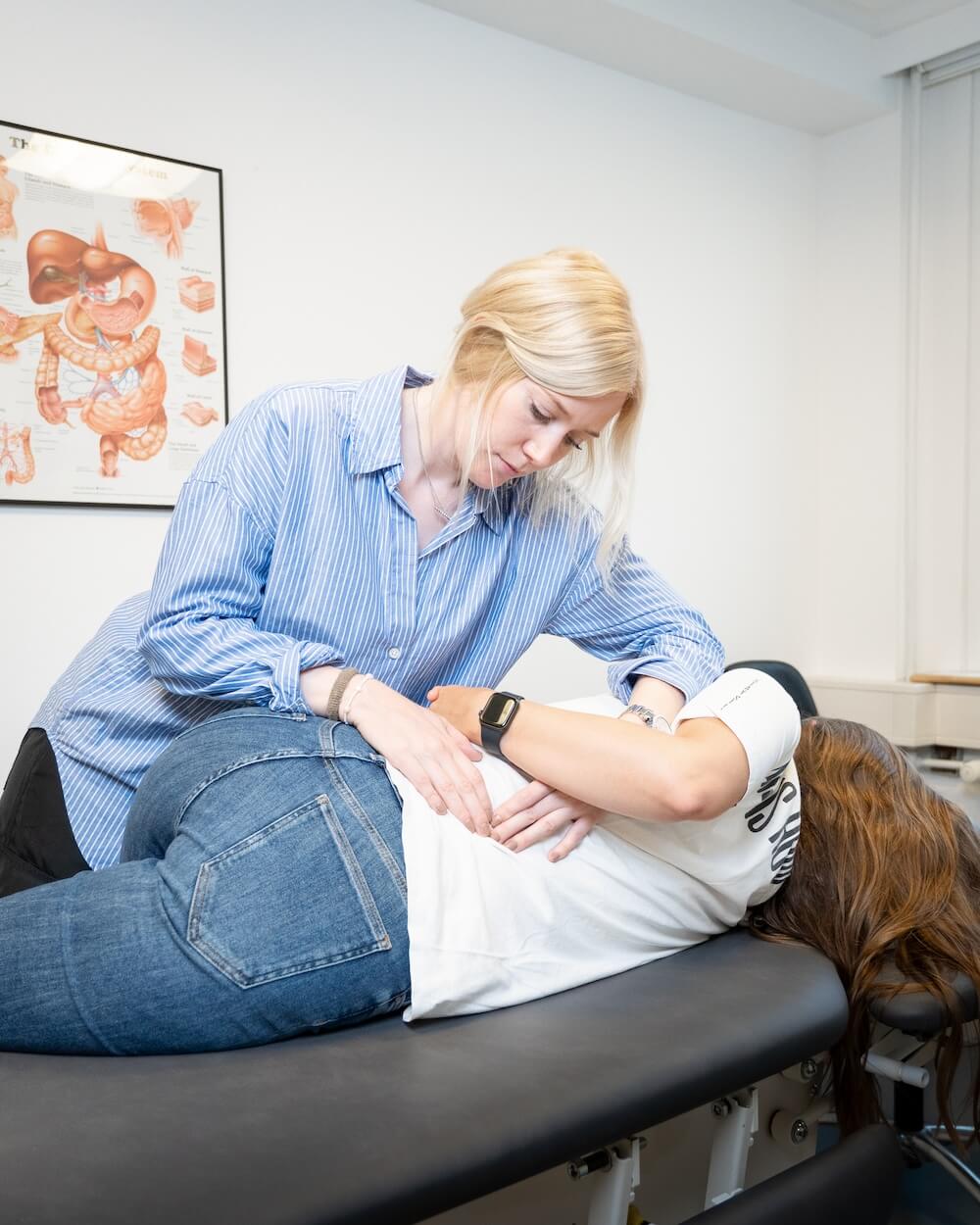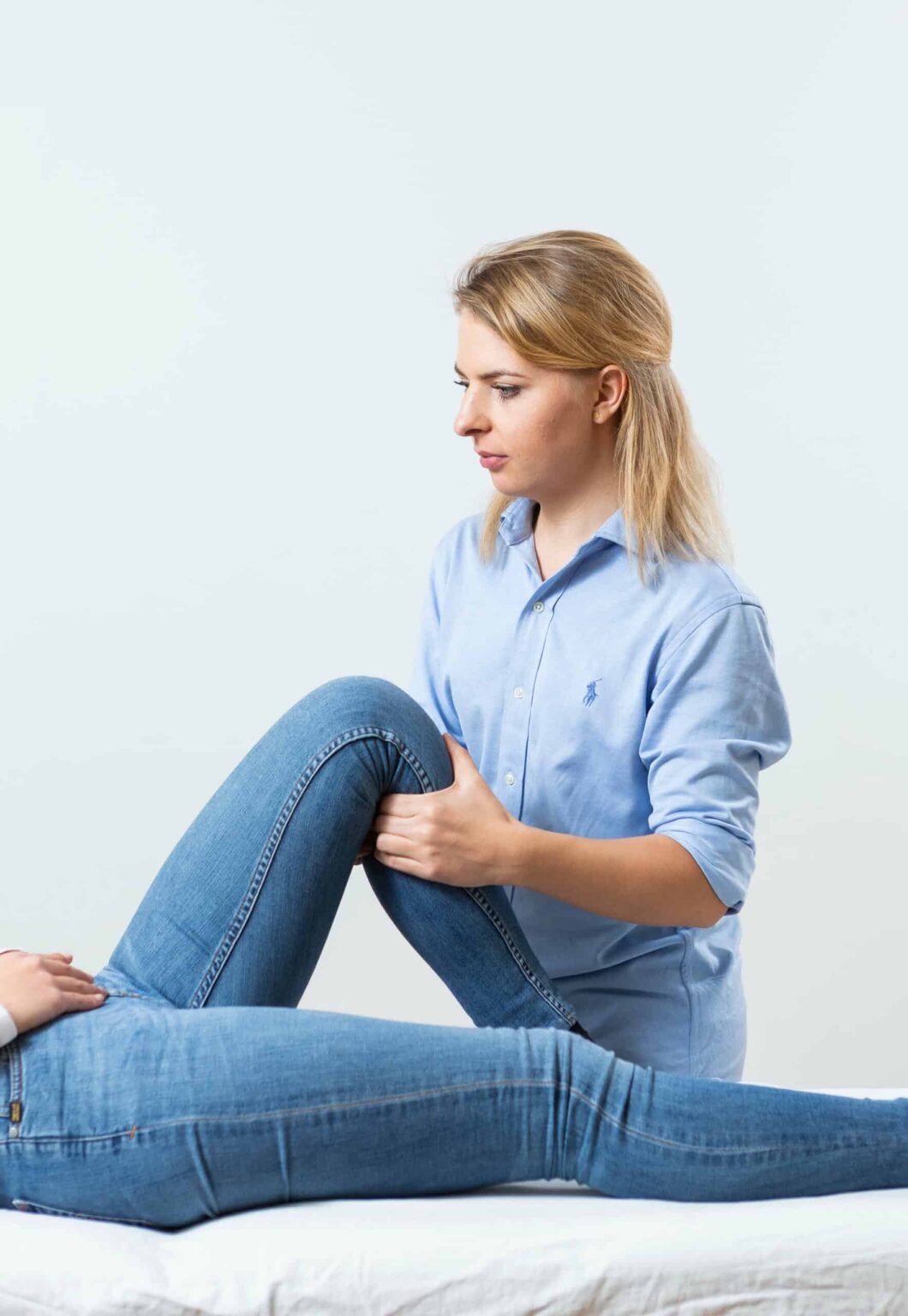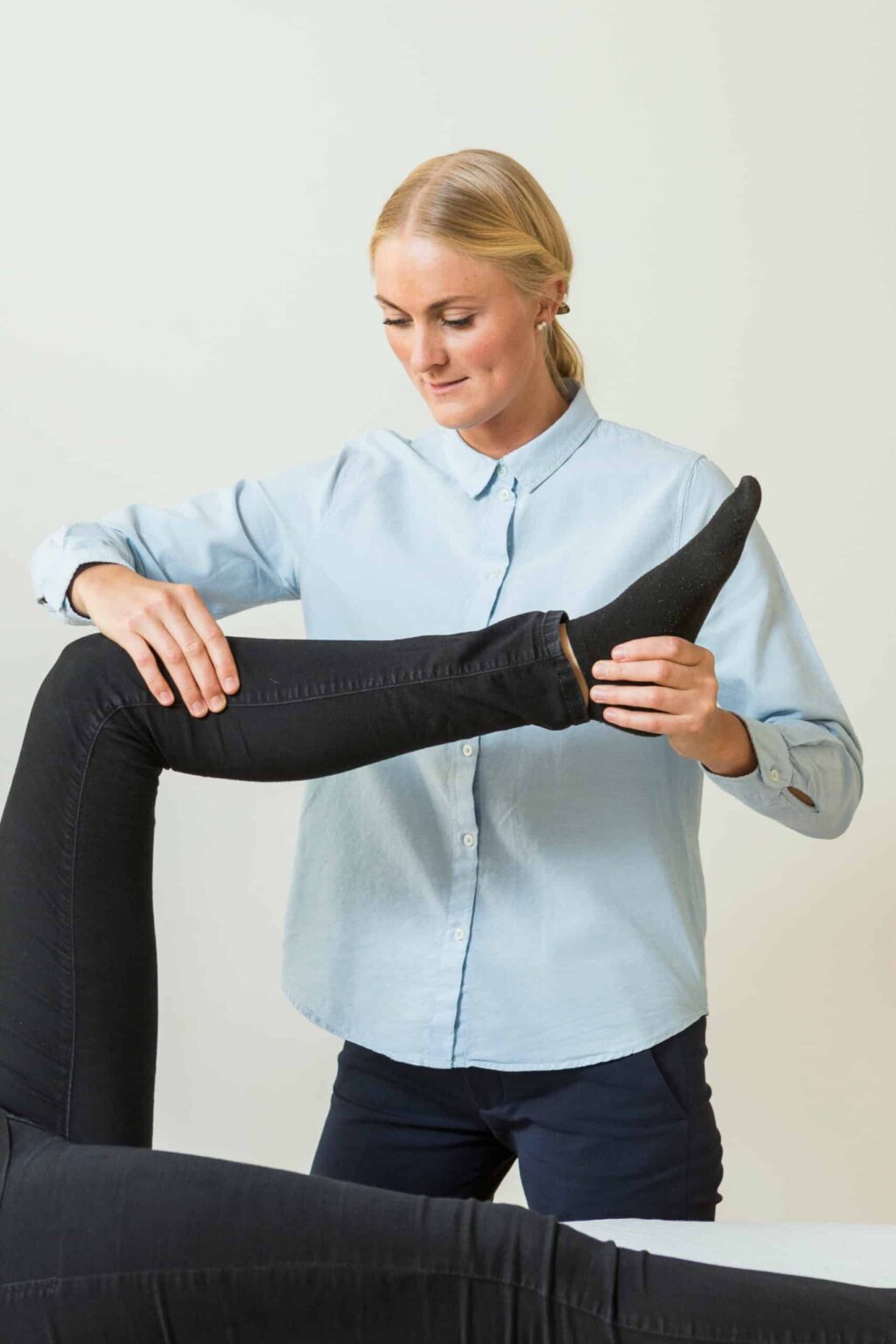We treat
Shin splints
Learn about shin splints here
Shin splints
Shin splints are an irritation of the muscles, tendons and/or tendon attachments of the lower leg. Shin splints are a common sports injury that most often occurs in connection with running.
Jump to section [Vis]
The circulatory system
The human circulatory system begins in the heart, which pumps oxygen-rich blood from the lungs to blood vessels throughout the body. When the oxygen is used up, the blood is transported back to the heart via the veins. This transport is dependent on the venous pump in the extremities and the diaphragm in the abdominal cavity. The venous systems drain oxygen-poor blood from the extremities, pelvis, back and chest, and from the digestive system, before ending up in the heart, which restarts the circulation. Too much pressure on the venous systems can slow down the return of venous blood and cause blood to accumulate, most often in the arms and legs, which are furthest from the heart.

The nervous system and shin splints
The nervous system has a big influence on what can affect shin splints. The nervous system, more specifically the autonomic nervous system (i.e. the system that controls everything we don’t have to think about), controls the elasticity of the muscles, connective tissue and ligaments in the leg. The muscles in the veins (blood vessels) to and from the leg are also controlled by the autonomic nervous system, i.e. it determines whether the blood vessels are relatively open or closed.
Causes of shin splints
Shin splints occur after muscle and tendon overload due to relatively hard training, which is very individual. Poor blood circulation to and from the lower leg means that recovery is slower and the chances of overload are greater. Mental and physical stress reduce the body’s ability to recover, which can make the body more prone to overload.
Good advice for shin splints
- Listen to your body’s signals – if your legs feel heavy and tired, skip the run.
- Don’t follow programs blindly – running programs DO NOT always have to be followed to the letter – if the body is in pain and unnaturally tired, it is its signal that it needs a break.
- Consider what you consume – sugar, starch, lactose, alcohol can cause problems with blood circulation.
- Reduce stress – stress reduces the body’s ability to recover and repair damage during busy periods.
- Be aware that back pain, poor posture, neck pain, sedentary work, and digestive problems can affect and cause shin splints.
Source: Netdoktor

Osteopathic approach to shin splints
The cause of the sports injury is determined, but first it must be clarified which structure is causing the pain.
-
- Incorrect positions in the hip, pelvis, knee and foot are corrected, as incorrect pulling of the muscles leads to overload.
- The circulatory system – including the heart, lungs, chest, diaphragm, liver, kidneys, digestive system and blood vessels – is treated to achieve better recovery and healing.
- Nerve supply to muscles, tendons and tendon attachments is normalized.
- The amount and load of training are corrected.
Shin splints often require physiotherapy rehabilitation (physiotherapist specializing in shin splints) to strengthen and stabilize muscles and connective tissue.




